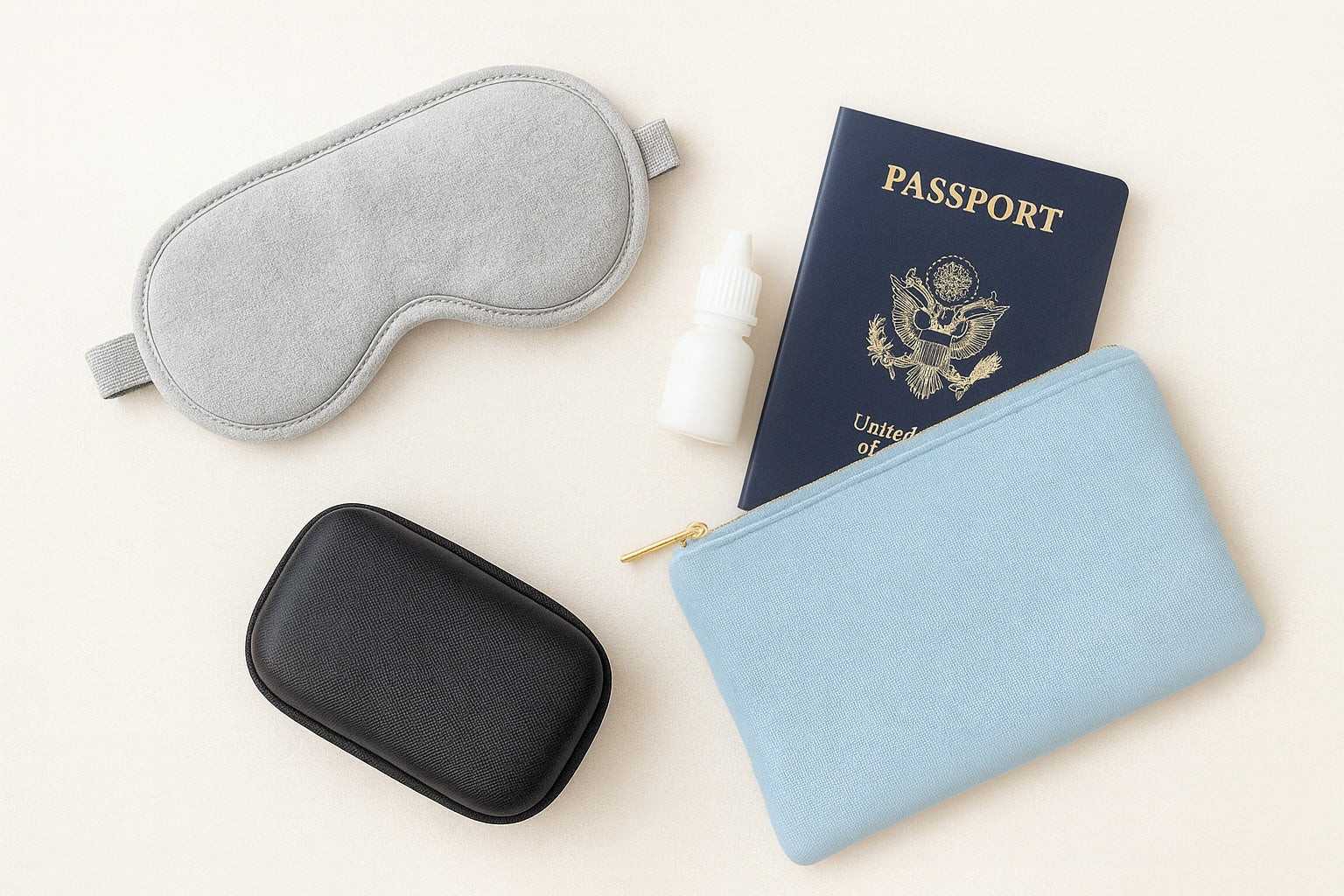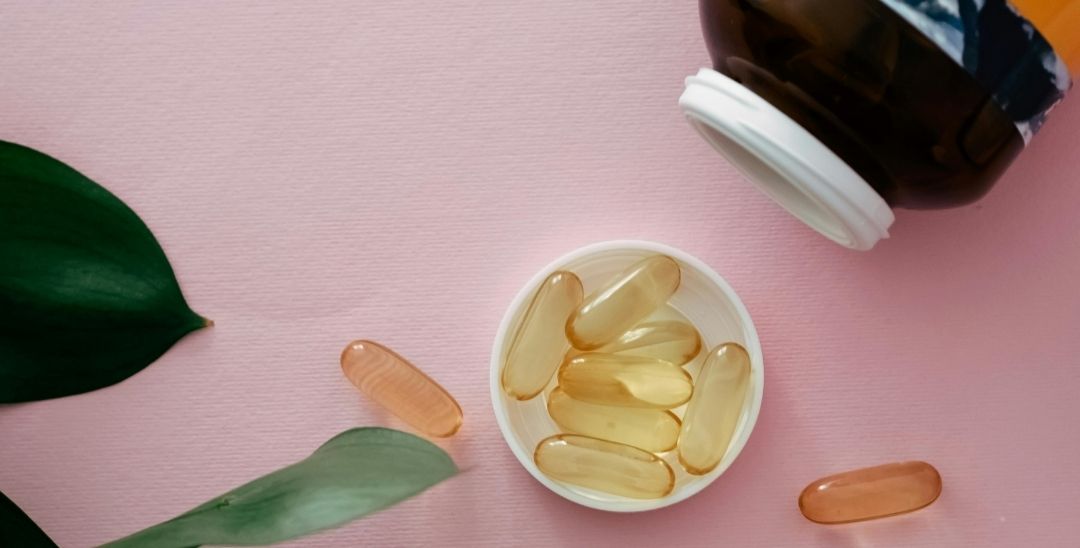If you’re suffering from chronic dry eye, you know how frustrating and painful it can be. You may feel like your eyes are constantly dry, irritated or burning. You may have trouble seeing clearly or wearing contact lenses. You may even avoid certain activities or environments that make your symptoms worse. Fortunately, you’re not alone.
Approximately 20 million people in the United States (344 million people worldwide) have dry eye disease (DED), and that number is growing in both young and older adults. It has been reported that 1 out of 7 individuals aged 48 and above have DED and nearly a third of adults over 65 years old have the condition, although the actual number is likely to be higher as there is no established diagnostic test and people with mild symptoms are less likely to report them to their doctor.
Recent studies have shown that dry eye can become a very real burden on daily living, making it difficult to focus on work, view a computer screen, or perform tasks like reading a book. Fortunately, many treatment options are available to help you manage symptoms and improve eye health.
What Is Dry Eye?
Tears help maintain the health of your eyes by keeping them moist, nourished and free from irritants. Dry Eye Disease (DED), medically known as keratoconjunctivitis sicca (KCS), occurs when tears can’t provide enough moisture for your eyes. Most individuals diagnosed with DED primarily experience evaporative dry eye, while a smaller percentage suffer from aqueous deficiency, and an even smaller group is affected by mucin deficiency, neuropathic pain, or other subtypes.
Categorizing these subtypes can assist both patients and healthcare providers in determining the best course of treatment. However, it's important to note that these subtypes of DED frequently intersect, potentially leading to confusion in the best way to manage symptoms. Common symptoms of DED may include:
- Dryness: A persistent feeling of dryness or grittiness.
- Blurry vision: Vision may become intermittently blurry, making it difficult to focus.
- Burning or stinging: You may feel a burning or stinging sensation, especially when exposed to dry or windy environments.
- Over tearing: Paradoxically, your eyes may produce more reflex tears to compensate for dryness, leading to watery eyes.
- Eye fatigue: Prolonged screen time or activities requiring intense focus can worsen dry eye symptoms and lead to eye fatigue.
- Pain or discomfort: You may experience eye pain, itchiness or the feeling of a foreign body sensation in your eyes.
- Redness: You may see increased redness in the whites of your eyes because of irritation.
- Sensitivity to light: Your eyes may become more sensitive to light (photophobia). Artificial light, like computer screens or fluorescent lights, may be particularly bothersome.
What Causes Dry Eye?

Illustration of the eye, tear film, and anatomy (National Eye Institute, 2016)
The tear film that coats the surface of your eye consists of three layers (ordered from top to bottom):
- Lipid (oil): Produced by glands in the eyelids, this layer helps prevent evaporation of tears.
- Aqueous (water): This is the middle layer of tears and makes up most of your tear film. It contains essential nutrients and proteins to nourish your eyes.
- Mucin (mucus): The innermost layer helps spread tears evenly across the eye’s surface and helps them stick to the eye.
Your eyes need a precise balance of oil, water and mucus to stay lubricated and healthy. When any of these layers become compromised, eyes can become dry and irritated.
But where does DED stem from? There can be many factors which contribute to the development or worsening of DED and associated symptoms. It is generally easiest to classify these contributing factors into two areas: Health vs. Environmental.
Causes: Health Related
Meibomian gland dysfunction (MGD)
One of the most common sources of DED, is Meibomian Gland Dysfunction (MGD) defined as blockage or other abnormality of the meibomian glands, tiny oil glands which line the margin of the eyelids. Meibomian glands are small oil-producing glands located along the eyelid margins. Typically, there are around 30 to 40 meibomian glands in the upper eyelid and 20 to 30 in the lower eyelid. These glands play a crucial role in secreting oil that coats the eye's surface, preventing the water portion of tears from evaporating. Under normal conditions, these glands secrete a clear and easily flowing oily liquid.
However, when the meibomian glands malfunction, the secretion becomes cloudy and sticky, leading to blockages in the gland openings at the eyelid's edge. This obstruction results in a reduced flow of lipids into the tear film, causing it to lose its stability and become prone to rapid evaporation. This, in turn, leads to discomfort and dryness in the eyes. Additionally, the accumulated blocked lipids can thicken at the eyelid's edge, increasing the risk of bacterial infections and the presence of eyelash mites (demodex).
Blepharitis and MGD
Blepharitis is a common eyelid condition characterized by inflammation of the eyelid margins which can disrupt the function of the meibomian glands, causing MGD. Additionally, the inflammation associated with blepharitis can also affect the quality of the meibum (the oily substance secreted by the meibomian glands). The altered composition of the meibum can lead to its thickening or becoming more viscous, further impeding its ability to spread evenly across the ocular surface. A study in 2012 demonstrated a high prevalence of MGD in patients with anterior blepharitis, reinforcing the link between eyelid inflammation and meibomian gland dysfunction.
The primary causes of blepharitis include:
- Bacterial Infections: Bacterial overgrowth on the skin, particularly Staphylococcus aureus, is a common cause of anterior blepharitis. These bacteria can colonize the eyelid margins, leading to inflammation and irritation.
- Demodex Mites: These microscopic mites, known as Demodex folliculorum and Demodex brevis, naturally inhabit hair follicles and sebaceous glands on the skin. In some cases, an overpopulation of Demodex mites can contribute to blepharitis, especially in posterior blepharitis (affecting the inner eyelid).
- Seborrheic Dermatitis: This is a chronic skin condition characterized by the overproduction of sebum (skin oils) and is often associated with dandruff. When it affects the eyelids, it can lead to seborrheic blepharitis.
Autoimmune Diseases
Autoimmunity can play a significant role in dry eye disease, notably in individuals with conditions such as Sjögren's syndrome, Rheumatoid Arthritis, or Thyroid eye disease. In Sjögren's syndrome, a systemic autoimmune disorder, the immune system mistakenly targets and attacks the body's exocrine glands, including the lacrimal glands responsible for tear production. This leads to chronic inflammation and structural damage leading to tear production that may become compromised.
Rheumatoid arthritis, another systemic autoimmune disease, can also be associated with dry eye. The immune system's aberrant response in rheumatoid arthritis leads to the production of autoantibodies, which can also target the lacrimal glands leading to poor tear production. Additionally, the pro-inflammatory cytokines released in rheumatoid arthritis further fuel ocular inflammation, amplifying the severity of dry eye symptoms.
Thyroid eye disease, an autoimmune condition linked to an overactive thyroid gland, can also trigger dry eye symptoms. For those with Thyroid eye disease, it may be common for the immune system to target the tissues surrounding the eyes, leading to inflammation and swelling. The subsequent compression of the lacrimal glands and alteration of tear composition result in reduced tear production and poor tear quality.
Physiology
Lagophthalmos, a condition where the eyelids are unable to fully close, can lead to dry eye through several mechanisms. This incomplete closure of the eyelids disrupts the normal protective and lubricating functions they serve for the eye's surface. Here's how lagophthalmos can cause dry eye:
- Altered Tear Distribution: One of the key functions of blinking is to spread tears evenly across the ocular surface. For people with lagophthalmos, the eyelids may not make sufficient contact with the cornea, leading to uneven tear distribution. This results in areas of the eye being inadequately covered by tears, which can lead to dryness and discomfort (link).
- Increased Tear Evaporation: The eyelids play a crucial role in reducing tear evaporation. When they don't close fully, a larger portion of the ocular surface remains exposed to the environment. This increased exposure can lead to accelerated evaporation of tears, particularly in dry or windy conditions. As tears evaporate more quickly, the eyes may not receive enough moisture, exacerbating dry eye symptoms (link).
- Impaired Drainage: Incomplete eyelid closure can lead to improper sealing of the lacrimal puncta, the small openings in the inner corners of the upper and lower eyelids. These puncta are responsible for draining excess tears into the nasolacrimal duct. When the eyelids don't close properly, it can disrupt the normal drainage process. This can result in tears being drained away too quickly, leading to reduced tear volume on the ocular surface (link).
Nocturnal lagophthalmos is sub-classification where a person's eyelids do not fully close during sleep. This means that a portion of the eye's surface remains exposed, which can lead to various eye-related issues. Nocturnal lagophthalmos can also be a symptom of an underlying medical condition, such as thyroid eye disease, Bell's palsy, or other neurological disorders.
Causes: Environmental
Dry Air & Wind
Individuals who live in desert or high-altitude areas may be more prone to dry eye as these climates often expose people to high winds and low moisture, which can contribute to the evaporation of tears on the eye’s surface. Pollution can also worsen dry eye symptoms by irritating the eyes and causing inflammation.
Digital Screens
Studies have also shown increased use of digital screens to cause increased severity of dry eye symptoms. Unfortunately, when looking at screens (phones, computers, and televisions), people tend to blink less frequently, leading to a decrease in tear production.
Contact Lenses
Contact lenses reduce the amount of oxygen that reaches the eye’s surface, making it more difficult for tears to form and stay on the surface. Contacts can also trap debris and bacteria, causing eye irritation or inflammation. To prevent this, it’s important to properly clean and care for contact lenses, as well as take breaks from wearing them if necessary.
LASIK
LASIK (Laser-Assisted In Situ Keratomileusis) is a popular surgical procedure used to correct vision problems such as nearsightedness, farsightedness, and astigmatism. While it can provide significant benefits in terms of visual acuity, it can also lead to dry eye symptoms in some patients. This occurs due to alterations in the corneal nerves and tear film dynamics during the surgical process.
- Corneal Nerve Disruption: The cornea is densely populated with nerve endings, which are crucial for maintaining a healthy tear film and providing sensory feedback to regulate blinking and tear production. During LASIK, a flap is created on the cornea, and the underlying tissue is reshaped with a laser. This process unavoidably disrupts corneal nerves, potentially affecting their ability to signal the need for tear production.
- Temporary Reduction in Tear Production: Post-LASIK, it's common for the eyes to produce fewer tears, a condition known as transient neurotrophic epitheliopathy. This is often due to the interruption of nerve signaling and the normal reflex to produce tears. While this is usually temporary, it can lead to dry eye symptoms during the recovery period (link).
- Altered Tear Film Composition: LASIK can cause changes in the composition of the tear film. The surgery may lead to reduced levels of mucin, an important component of the tear film that helps it adhere to the corneal surface. This can result in instability of the tear film, contributing to dry eye symptoms (link).
- Pre-existing Dry Eye: Individuals who already have pre-existing dry eye conditions are at a higher risk of experiencing exacerbated symptoms after LASIK. It's crucial for these patients to be evaluated and managed appropriately before undergoing the surgery to minimize the risk of postoperative dry eye (link).
While dry eye is a potential side effect of LASIK, it's important to note that advances in surgical techniques, pre-operative assessments, and post-operative care have significantly reduced the incidence of severe and long-lasting dry eye after LASIK. Many individuals experience temporary dry eye symptoms that gradually improve as the eyes heal.
Medications
Certain medications can contribute to or exacerbate dry eye symptoms as a side effect. Here are some classes of medications known to potentially cause dry eye:
- Antihistamines: These drugs, commonly used to treat allergies, can reduce tear production, leading to dry eye symptoms. Examples include diphenhydramine (Benadryl) and cetirizine (Zyrtec).
- Decongestants: Some nasal decongestants, particularly those that contain pseudoephedrine, can lead to dry eye by reducing tear production.
- Antidepressants: Certain classes of antidepressants, such as tricyclic antidepressants (TCAs) and selective serotonin reuptake inhibitors (SSRIs), have been associated with dry eye symptoms. Examples include amitriptyline (Elavil) and fluoxetine (Prozac).
- Antipsychotics: Some antipsychotic medications may lead to dry eye as a side effect. This can include drugs like chlorpromazine (Thorazine) and olanzapine (Zyprexa).
- Diuretics: Diuretics are medications that increase urine output. They can lead to dehydration, which can in turn affect tear production. Examples include furosemide (Lasix) and hydrochlorothiazide.
- Antispasmodics: These drugs, used to treat muscle spasms, can sometimes lead to reduced tear production. An example is scopolamine.
- Antihypertensive Medications: Certain blood pressure medications, particularly beta-blockers, may lead to dry eye. Examples include atenolol and propranolol.
- Hormone Replacement Therapy: Some forms of hormone replacement therapy, particularly those containing estrogen, can contribute to dry eye symptoms.
- Acne Medications: Oral medications used to treat severe acne, such as isotretinoin (Accutane), can lead to dry eye as a side effect.
- Chemotherapy Drugs: Some chemotherapy drugs can lead to dry eye symptoms due to their effects on the mucous membranes, including the eyes.
It's important to note that not everyone who takes these medications will experience dry eye, and the severity of the symptoms can vary. If you are taking any of these medications and are experiencing dry eye symptoms, it's advisable to consult with your healthcare provider. They can provide guidance on managing or mitigating these symptoms, potentially adjusting your medication regimen if necessary.
Treatment Options for Dry Eye

There are many treatment options to help improve symptoms associated with DED, depending on the severity of symptoms and underlying cause.
OTC Drops
Artificial tears, or Over the Counter (OTC) eye drops, are a key component in the management of dry eye disease.
It's important to note that while these products can provide relief for mild to moderate dry eye symptoms, they may not be sufficient for more severe cases. If you have chronic or severe dry eye, it's advisable to consult with an eye care professional for personalized recommendations.
Advanced treatments
For severe or chronic dry eye, an ophthalmologist may recommend advanced treatments such as:
Reduce Inflammation
- Topical Corticosteroids: In certain cases, short-term use of topical corticosteroids may be prescribed to reduce inflammation and provide relief from severe dry eye symptoms.
- Xiidra (Lifitegrast) reduces symptoms by blocking an inflammatory signaling molecule.
- Restasis (Topical cyclosporine) reduces inflammation and helps increase tear production.
- Cequa (Cyclosporine): Similar to Restasis, Cequa is a cyclosporine-based eye drop designed to reduce inflammation associated with dry eye.
- Autologous Serum Tears: These are custom-made eye drops prepared from a patient's own blood serum. They contain essential nutrients and growth factors that can help nourish and protect the ocular surface.
- Autologous Platelet-Rich Plasma (PRP): Similar to Autologous Serum Tears, PRP eye drops are made from the patient's own blood and contain a high concentration of platelets, which release growth factors and promote healing on the ocular surface.
- Amniotic Membrane Transplants: Amniotic membrane tissue can be placed on the ocular surface to promote healing and reduce inflammation in severe cases of dry eye.
Improve Tear Quantity or Quality
- Punctal Plugs or Occlusion: These tiny plugs are inserted into the tear ducts to block drainage, helping to conserve tears on the ocular surface. They can be temporary or permanent, depending on the type used and the patient's needs.
- Intense pulsed light (IPL) therapy: This treatment uses bursts of light to stimulate the production of oils in the meibomian glands, which can improve dry eye symptoms.
- Lipiflow: Lipiflow is a FDA-approved medical device that applies controlled heat and pressure to the eyelids to help unblock and express the meibomian glands. This can improve the quality of the oily component of the tear film.
- Probing and Expression of Meibomian Glands: This procedure involves the physical expression of the meibomian glands to help clear blockages and improve the flow of oils to the tear film.
- Neurostimulation (TrueTear): TrueTear is a handheld device that uses neurostimulation to trigger natural tear production. It is a non-invasive option for individuals with certain types of dry eye.
Tear Evaporation Prevention
- Scleral Lenses: Scleral lenses are larger gas-permeable lenses that vault over the entire cornea and rest on the sclera. They create a reservoir of fluid between the lens and the cornea, providing continuous hydration and protection for the ocular surface.
Lifestyle Adjustments

Nighttime Protection
Nighttime protection for the eyes includes products such as the Blinkjoy Moisture Retaining Sleep Mask create a moisture rich space over the eyes, hydrating the sensitive eyelid area and preserving drops or ointment throughout the night. Sleeping with a moisture retaining sleep mask may help improve the comfort of your eyes, and is a necessity for those who suffer from exacerbated dry eye symptoms at night or in the morning after waking up.
Warm Compresses
Warm compresses are a simple yet effective at-home remedy for managing dry eye disease, especially when it's associated with meibomian gland dysfunction (MGD). By softening the meibum and allowing it to flow more freely, warm compresses help enhance the function of the meibomian glands. This improves the quality of the oily layer of the tear film, which in turn helps to reduce evaporation and stabilize the tear film. Whatsmore, the warmth from the compress can stimulate blood flow to the eyelids, which can promote better function of the meibomian glands.
Eyelid Cleansers
Maintaining proper eyelid hygiene is crucial for preventing eyelid infections and ensuring a healthy eyelid margin. When the eyelids are not cleaned adequately, it can lead to the development of lid margin disease. This condition involves bacterial overgrowth, the accumulation of oily secretions, buildup of dead skin cells, and inflammation at the base of the eyelashes. The presence of this debris on the eyelashes can give rise to various issues including blepharitis, meibomitis, dry eyes, Staphlyococcal hypersensitivity, and ocular infections. Additionally, Demodex folliculorum, a type of skin mite, is a common cause of blepharitis, often observed in individuals who do not adhere to a proper eyelid hygiene routine. Therefore, maintaining rigorous eyelid hygiene is especially crucial for those with DED. It is recommended to perform lid scrubs on a daily basis, either in conjunction with your regular face-washing routine or during your shower or bath.
Minimize Contacts, Screen Time, and Irritants
- Blink regularly. Make a conscious effort to blink, especially when using digital devices for extended periods.
- Limit the use of contact lenses. Consider wearing glasses instead of contacts to help reduce eye irritation.
- Reduce screen time. Position your computer screen slightly below eye level and about 20-28 inches away to reduce the risk of evaporation from extended screen use.
- Use a humidifier. A humidifier can increase ambient humidity and reduce dry eye symptoms in dry indoor environments.
Living with Dry Eye
Living with chronic dry eye can be challenging, but many treatment options are available — from home remedies and lifestyle changes to more advanced treatment options. It’s crucial to stay proactive, seek professional help, and continue exploring different methods until you find what works best. Remember, everyone’s experience with dry eye is unique, and what works for one person may not work for another.
Patience can be your greatest ally in this journey. Keep open communication with your health care provider, and don’t hesitate to discuss new or changing symptoms. Living with dry eye can be managed - with the right treatment regimen and lifestyle changes, you can find relief.
Contributors

Justin Mendelson
Serial entrepreneur and product development expert, Justin Mendelson has lived with severe dry eye for nearly two decades. When he was at his worst, he used rewetting drops every 20 minutes and wasn’t sleeping longer than an hour at a time without waking up in excruciating eye pain. After many years of struggle, Justin made a commitment to himself and to the millions of people that suffer from eye disease to develop better products for eye health and chronic dry eye relief.
References
- Dry Eye Disease, American Academy of Opthalmology
- Dry eye disease negatively affects patients’ health and vision-related quality of life
- Dry eye syndrome: comprehensive etiologies and recent clinical trials
- Prevalence and associated risk factors of dry eye disease in 16 northern West bank towns in Palestine
- How Contact Lenses Contribute to Dry Eye
- Post-LASIK dry eye disease: A comprehensive review of management and current treatment options
- Dry eye disease: when to treat and when to refer
- Dry Eye Disease: Consideration for Women’s Health
- Dry eye, its clinical subtypes and associated factors in healthy pregnancy
- Intense pulsed light (IPL) therapy for the treatment of meibomian gland dysfunction
- Amniotic Membrane Transplantation in Ophthalmology: An Updated Perspective
- Autologous serum eye drops in dry eye disease: Preferred practice pattern guidelines
- Cyclosporine ophthalmic emulsions for the treatment of dry eye: a review of the clinical evidence





